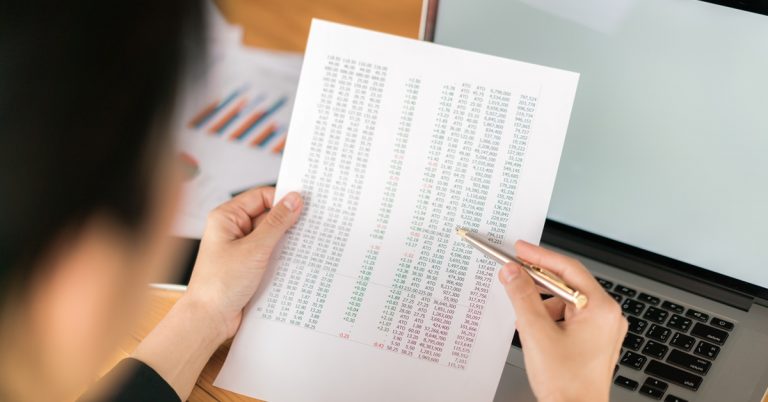How To Decode Your Bank Statement And Catch Hidden Red Flags

Table of Contents
If you’ve ever stared at your bank statement wondering, “Wait, what’s this charge for?”, you’re definitely not the only one. Most people skim through their monthly statements just long enough to see their balance and then move on. But that plain-looking document or the PDF that quietly lands in your inbox each month is actually a snapshot of your financial health.
With digital banking taking off across Malaysia and more of us relying on e-wallets and mobile apps, being able to read your bank statement properly has never been more important. It’s how you notice those sneaky little deductions, keep tabs on your spending, and spot potential scams before they become a bigger problem.
Here’s the thing though, according to Bank Negara Malaysia’s MYFLIC Index, Malaysians scored just 59 out of 100 back in 2021. That’s a gentle reminder that most of us still have room to grow when it comes to financial literacy. The good news? Getting familiar with your bank statement is a simple way to start taking charge.
Why should you care?
So why does all this matter and why should you care? Think of your bank statement as a personal financial detective. It tells the truth even when your spending habits don’t want to. Here’s why keeping an eye on it can save you stress (and valuable ringgit):
- Prevent fraud & unauthorised charges: As digital banking, e-wallets and online payments grow more pervasive, the risk of unauthorised transactions rises. Regularly reviewing your statements increases the chance of spotting something suspicious early.
- Track spending & budgeting: Many Malaysians don’t maintain detailed budgets. By analysing your statement, you can see recurring expenses and identify areas to cut back.
- Ensure correct fees & interest charges: If your statement shows maintenance fees, overdraft charges or interest costs, you should verify they’re legitimate and match your bank’s published schedule.
- Support for financial health / loan applications: If you seek credit (e.g. home loan, personal loan), the bank might request past statements. If your statements show poor financial discipline or frequent overdrafts, it may weaken your application.
- Better control of savings / inflows: Knowing exactly when your salary, EPF withdrawals, dividends or other credit entries arrive helps you plan ahead.
Anatomy of a bank statement analysis
While formats differ across Malaysian banks (Maybank, CIMB, RHB, Public Bank, etc.), most statements include similar sections. Let’s break it down.
| Section | What to look for? | Why does it matter? |
|---|---|---|
| Account details | Name, account number, branch | Ensures the statement is yours and for the correct account |
| Statement period & opening/closing balances | Beginning balance, ending balance | Provides the baseline for your period’s activity |
| Credit entries | Salary, refunds, transfers in, interest earned | Helps you verify expected cash inflows |
| Debit entries | Bills, purchases, ATM withdrawals, fees | The bulk of your outflows; must match your memory |
| Bank charges & fees | Monthly service fee, maintenance fee, ATM fees | Check that they align with your bank’s published charges |
| Interest/rebates or adjustments | Interest on savings, reversal of incorrect charges | Confirm these are computed correctly |
| Notes/terms & messages | Any bank disclaimers or notices | May include important alerts or changes in policy |
Step-by-step: How to decode your statement
- Start with opening and closing balance: Calculate the difference; your total credits minus debits should add up correctly (plus or minus those few extra sen’s of course).
- Scan large debits and credits: Any transaction much larger than your usual day-to-day spending deserves scrutiny. For example, a RM1000 ATM withdrawal you don’t recognise.
- Group recurring payments: Identify subscriptions, utilities, insurance premiums or loan instalments. Are they all legitimate? Are any no longer relevant?
- Check the bank charges: Many users are surprised by maintenance or “inactive account” fees. But be sure to double check the amount and make sure it tallies with what’s outlined in your bank’s fee schedule.
- Look for irregular entries: These may be small amounts or odd-timed debits (e.g. RM 0.50 several times) designed by fraudsters as “test charges.”
- Track with your own records: Keep a monthly personal budget or expense tracker. Cross-check that every big item aligns. If your bank statement shows something missing, flag it.
Red flags & warning signs (Spotting account irregularities)
Your bank statement is an extremely important piece of document. Even tiny “test” transactions, a few sen here, a ringgit there can be the first move by fraudsters checking if your account is alive and kicking. Ignore them and you might be giving scammers a head start.
If you see a merchant name you don’t recognise or the same charge appearing multiple times? That’s your cue to pause and investigate. Sometimes it’s an innocent system glitch but other times it’s an unauthorised charge sneaking through while you’re none the wiser.
Keep an eye out for unexpected fees, too. Dormant account charges or ATM withdrawals from overseas when you haven’t travelled recently? Definitely suspicious. And don’t forget to double-check the “good stuff”- even legitimate items like interest credits should match your bank’s published rates.
Another subtle warning sign to keep an eye out for is any sudden shift in your spending pattern. Maybe you’re seeing big online purchases or random late-night transfers that don’t sound like you. Trust your instincts, if something feels off, it probably is.
Catching these early is half the battle. Under Bank Negara Malaysia’s consumer protection rules, banks must investigate any disputed transactions. But remember, they can only help once you raise the flag. So think of yourself as your own financial detective. Be sharp-eyed, alert and always one step ahead of the scammers.
Tips to make bank statement review easier
- Set a recurring “statement audit” date– Perhaps the first week of every month, when your statement arrives.
- Use digital banking tools– Many Malaysian banks allow you to tag or categorise expenses, set spending alerts or export statements to Excel for easier comparison.
- Turn on transaction notifications– Real-time SMS or app alerts help you catch suspicious activity immediately.
- Archive statements– Keep at least 12 months’ worth of statements (preferably more) for reference, especially when applying for loans.
- Educate family members– If you share accounts (e.g. with spouse), ensure they also know how to read statements.
Understanding your bank statement analysis is not just for finance geeks- it’s an essential tool in today’s digital banking era. For Malaysians, with the rising adoption of e-wallets, online shopping and digital payments, it is important to add these guidelines to reading and understanding your bank statements so you can be sure that your money is not being drained by a scammer.









